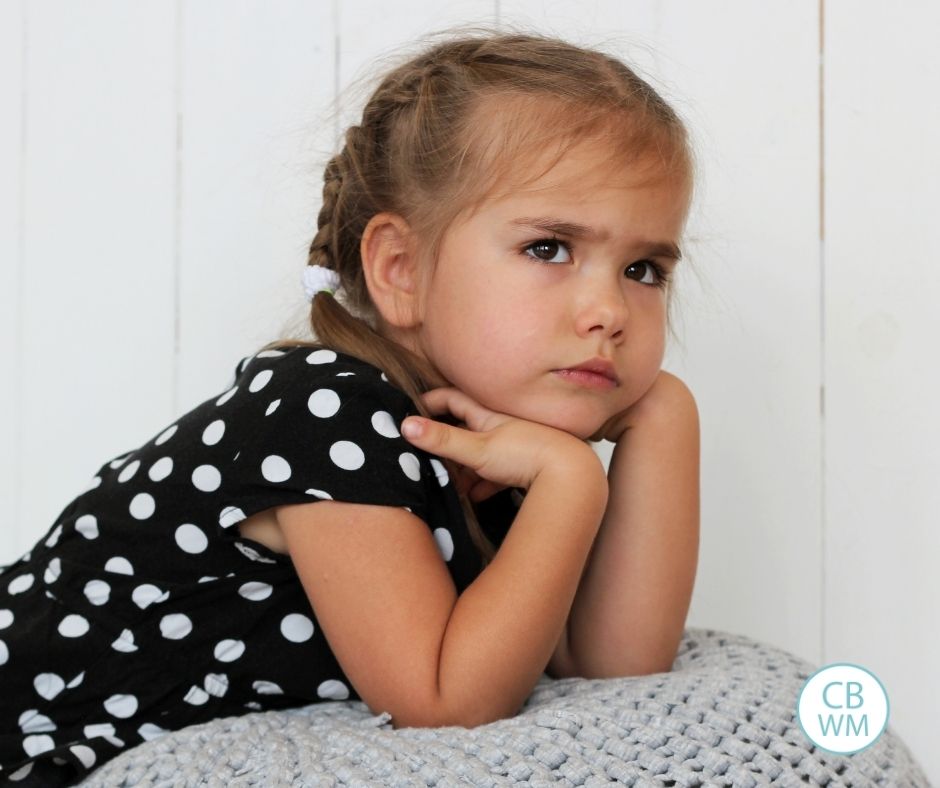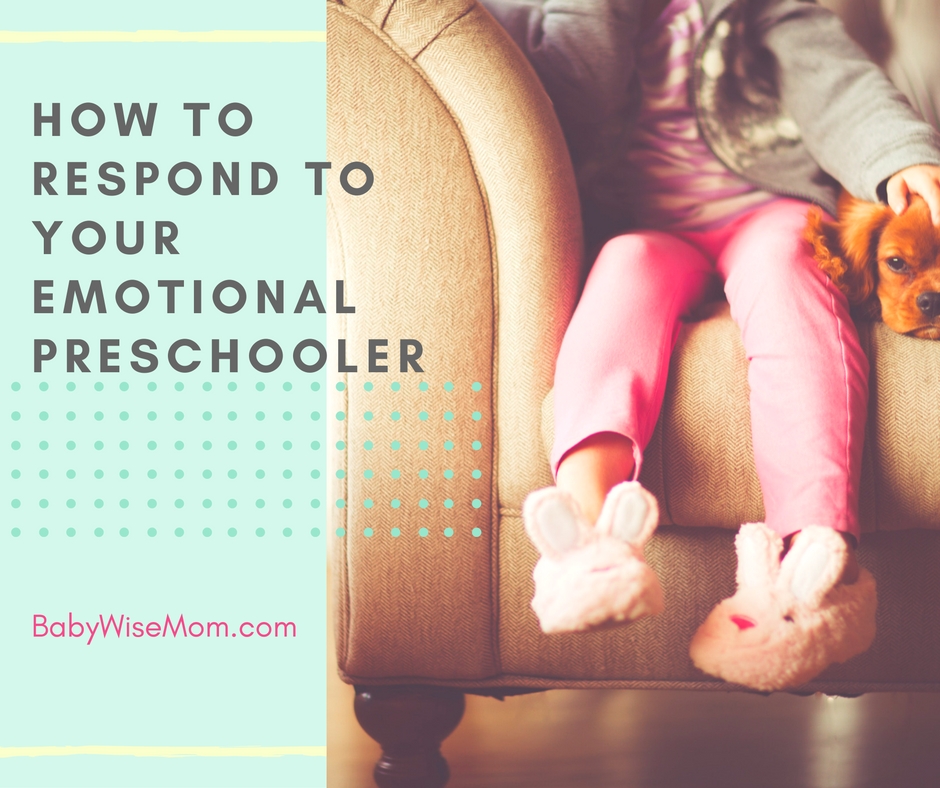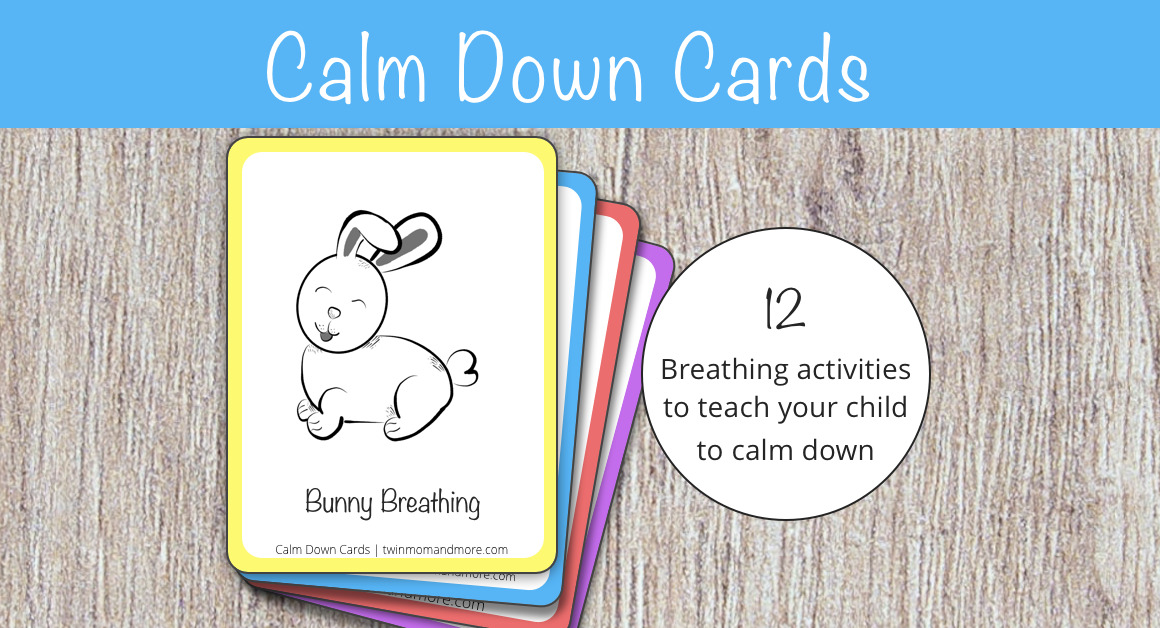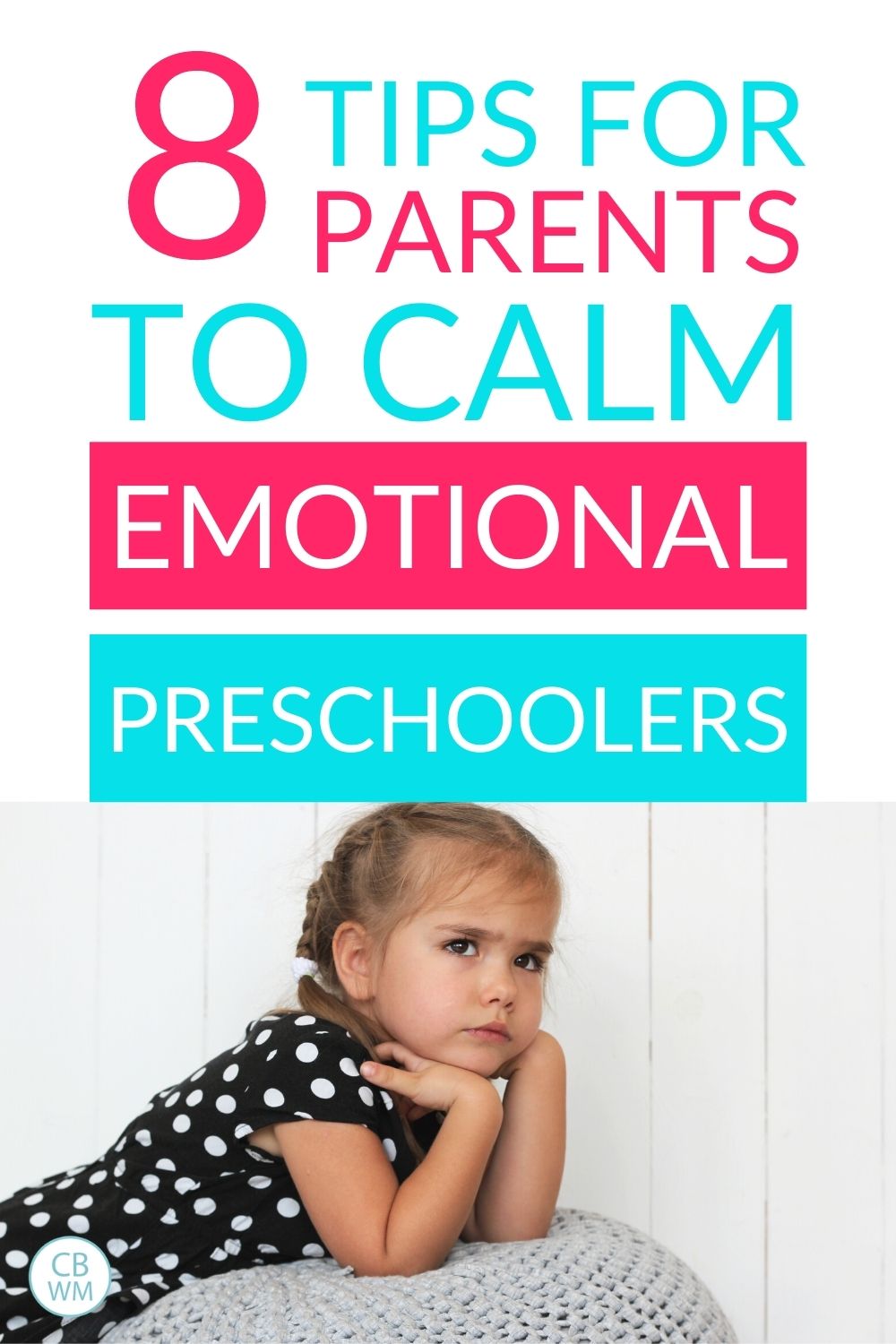Get 8 tips for helping your preschooler to calm down when she is being really emotional. Learn what to do and what not to do.

“Mama I love it when you hug me. It makes my heart grow bigger,” my little four year old told me as I gave her a good night hug.
This is the sweet side of the four year old emotional roller-coaster. The high.
The lows involve melting down into a puddle of hurt feelings over you asking her to put pants on.
Preschoolers can be quite emotional. The lows are mind-crushing, but the highs are so sweet.
These highs and lows can literally be from one minute to the next.
Your little cutie can be laughing her head off one second, then laying on the floor crying about something you “never” let her do. Literally one minute later, she will be back up to feeling positively joyful about that cloud in the sky.
It is basically a year-long ride and it goes and goes.
I love thrill rides, but every so often you need a break. The ride can leave you feeling disoriented and confused and you have no idea how to respond.
I have some tips for you to make it through safely.

Post Contents
1-Empathize
I find it very helpful to empathize.
I don’t do it in a way that says, “Yes, you are so right. Your life IS the worst!”
I do it in a way of, “Oh, are you feeling sad? I am so sorry you are sad!”
Whether or not we find it justified, her favorite boots being too small for her seems like the end of her world right now.
You point out the book is the same size it was yesterday or that she is lucky she has a book at all isn’t going to help.
She needs empathy.
Just be happy you have raised her in an environment so far that something like that is the most upsetting event in her life.
No matter how unimportant it seems to you, it is important to her and she is trying to figure out how to deal with the emotions.
>>>Read: The Perfect Way to Respond to a Dramatic Child
2-Label
Help her explain how she is feeling.
Upset. Frustrated. Mad. Sad. Angry. Disappointed.
Help her recognize and label the feelings. These will help her understand and grasp her feelings better.
One helpful game we played at our house goes like this.
I would say, “I am going to look….sad” then I would make a sad face.
Then the child takes a turn and shares her emotion and face that goes with it.
We do this at times of non-conflict (I often did it while doing the girls’ hair). They get practice learning what different emotions are. If they have questions about an emotion you show, they will ask.
3-Hug It Out
I find it is very helpful to wrap that child in a hug and let her be upset.
I do the “sorry you are sad” and the labeling while in the hug. The way my personality is, I will hug them even if they protest.
I manage to keep things light while doing this and it basically just turns in to her laughing instead of crying.
If you try a hug it out with your child and that doesn’t go over well, abandon the hug idea. It well definitely work best with kids who have physical touch high on their love-language list, but most four year olds love hugs from mom.
4-Distract
The tools of distraction and substitution worked wonders for the toddler and they still can be effective for the preschooler.
“You can’t wear shorts when it is 30 degrees outside, but you can wear these beautiful pants! Look at these! Wahoo!”
Be excited, sell the option, and your child will move out of the grump and into the fun.
>>>Read: How to Use Substitution for Toddler Discipline and Distraction as a Discipline Tool
5-Issue a Time-Out
Sometimes an emotional outburst will turn into an all-out tantrum.
If the emotion turns to a screaming tantrum, I tell her that she needs to get control of herself or she will need a time-out.
Taking a time-out when you are not in control of your emotions is just a good idea in general. This is true for adults and four year olds alike.
I have her go to a time out until she has calmed down. I don’t do this unless my steps above haven’t work and only when it has escalated into the tantrum.
>>>Read: How To Use Time-Out Effectively
6-Recognize it is a Time of Learning
The wild emotions can be confusing and frustrating, but remember that this is a time of development.
Your child is developing emotions. She is feeling things she has never felt before. She needs to learn to harness them.
Just like the story I shared at the beginning, that comes with good as well the negative side.
That comes with greater love and the child starting to look outside of herself more. This is a great thing! You have the opportunity to teach her how to manage her emotions in a healthy way.
7-Respond With Patience
Your attitude as a parent carries so much power over your children.
I know sometimes you have had it and need a time out yourself.
If that is the case, get your child in a safe place and go compose yourself. Do all you can to maintain control and patience with your child.
If you respond to the big emotions with frustration and anger, it will not help your child break the emotional outburst.
Just keep some things in mind.
Your child is not being emotional to get to you. Do not take the behavior personally. It isn’t about you. It is about your child.
Your child is feeling new feelings and doesn’t know how to navigate them.
Your example will help your child learn how to respond when she is feeling anger and frustration.
Be gentle and patient and you can help your child turn that frown upside down quickly.
Remember, roller coaster. Hang in there and you will be up on a high in no time. You can’t expect a four year old to stay calm if you cannot.
8-Use Calm Down Cards
Calm down cards are a helpful, tangible way to give your child real tools to be able to calm down. Your child will be able to work through the emotions she feels best if she is calm.
You can order a set of 12 custom calm down cards to help you teach your child to calm down. My friend Caitlin over at Twin Mom and More created these and her kids have very much benefited from them!
These cards help you teach your child deep breathing exercises, which will help them calm down!
They are only $7.00! Get your cards here.
These cards come with a full parent guide so you know how to best use them and teach them.

>>>Read: When Your Parenting Toolbox Isn’t Enough
Conclusion
Keep in mind this is a slow process. Just like your child needed time to learn to fall asleep alone or be potty trained, she will need time to learn to control her emotions.
You might find your child is having a hard time coming out of the bad mood.
Typically with a preschooler, that ride is driving itself and you will be at a peak cheering before you have fully processed the low point, but in case the ride gets stuck, be sure to read my tips on correcting for attitude linked below.
Related Posts
- Should You Correct for Attitude?
- 6 Things to Know About Raising a Highly Sensitive Child
- How to Allow Children to Feel Without Acting Out
- How To Help Your Child Work Through Emotions
This post originally appeared on this blog in September 2016

